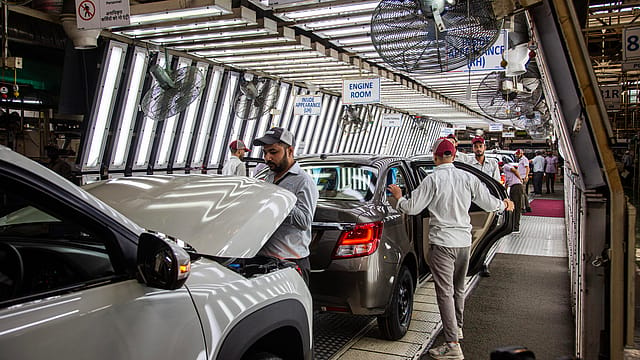Tata Motors’ portfolio to see the highest price reductions post GST, ahead of Maruti Suzuki, Hyundai, and Mahindra: HSBC
ADVERTISEMENT

The portfolio of Tata Motors is expected to see the highest reductions in price following the reduction of GST on passenger vehicles, followed by Maruti Suzuki , Hyundai Motor India , and Mahindra & Mahindra , respectively, according to a research note by HSBC.
According to HSBC, passenger vehicles are likely to see price reductions of between ₹40,000 and ₹1.5 lakhs, with the highest reductions on vehicles priced between ₹10 and ₹15 lakhs. The biggest beneficiary, according to HSBC, will be compact utility vehicles, followed by large diesel SUVs, and then entry-level cars.
For two-wheelers, HSBC expects robust growth for all segments at the same time. “While the GST cut may push premiumisation from economy to executive vehicles, it will also attract first-time buyers as the on-road price of entry-level motorcycles will fall from ₹70,000 to ₹63,000,” reads the note from HSBC. However, growth in electric two-wheelers will stagnate due to the decline in value proposition, the note reads as a caveat.
The demand for commercial vehicles (CV) is also expected to improve, as the GST cut is expected to accelerate the FY26 GDP growth rate by 20 basis points, according to economists at HSBC. “We assume this will translate to equivalent CV demand, further assisted by GST-led price drops. Although a large share of CV buyers buys on credit (hence the net benefit from lower CV prices may be relatively lower compared to passenger vehicles or two-wheelers),” the note adds. HSBC estimates that the medium to heavy commercial vehicles will grow at 150 basis points between FY25 and FY28.
December 2025
The annual Fortune 500 India list, the definitive compendium of corporate performance, is out. This year, the cumulative revenue of the Fortune 500 India companies has breached $2 trillion for the first time. Plus, find out which are the Best B-schools in India.
As demand should accelerate due to the GST reduction, the expectation of Indian autos’ share prices is already up 6-17% (vis-a-vis Nifty 50 up 2%) since 15 August, when Prime Minister Narendra Modi announced the GST reforms from the ramparts of the Red Fort. “Current valuations, even after our EPS estimate increases, are punchy and 15% higher than the 10-year average; therefore, we see the stocks tracking EPS growth for the next year.”
Although share prices are likely to remain range-bound in the near term, HSBC is upbeat on the long-term export potential of MSIL and Hyundai. In two-wheelers, Bajaj’s relatively undemanding valuations are tempting, but its persistent lower growth compared to peers remains disappointing. “We continue to like TVS and don’t see much downside risk to Eicher Motors ,” the note adds.
